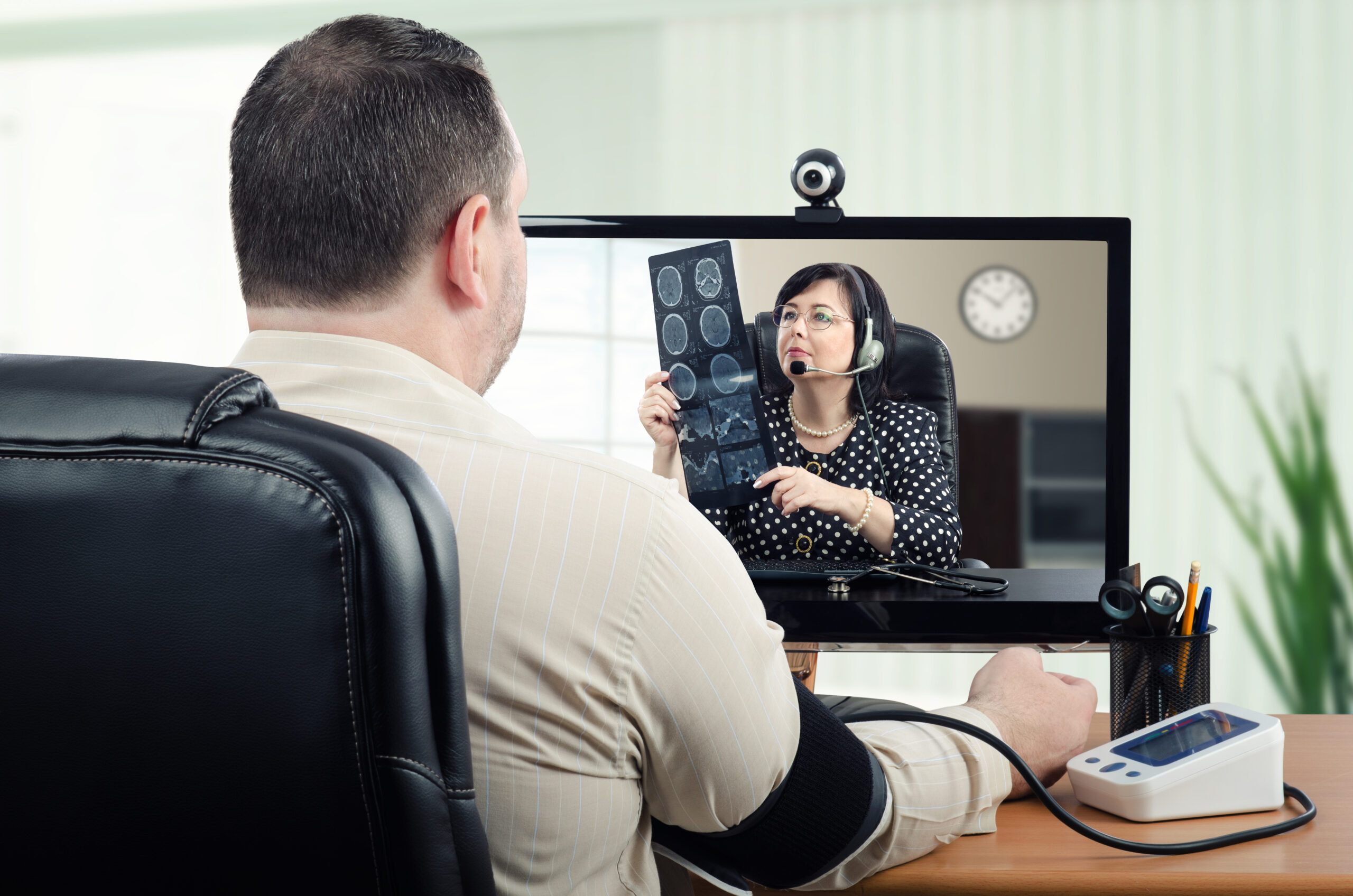What is telemedicine?
Telemedicine is sharing information about a patient’s health outside of a traditional in-person visit with a doctor. Telemedicine began in the 1950s when hospital systems tried to find ways to share information through the telephone.
Telemedicine was used between doctors and their patients, especially when connecting a patient to a specialist at a distance. The internet has brought a new age of telemedicine. Telemedicine is utilized mostly through video calls, allowing doctors to see their patients.
Telemedicine has been vital during the Coronavirus pandemic. Remote healthcare allows patients to discuss their health with doctors from the safety of their homes.
It is important to C & A Scientific to support the healthcare industries using telemedicine. Our customers are helping to improve healthcare and support patients using our products to better serve their needs. Find our line of supplies, here.

What is the difference between telemedicine and telehealth?
According to the American Academy of Family Physicians, telemedicine is “the practice of medicine using technology to deliver care at a distance.” While they describe telehealth as “electronic and telecommunications technologies and services used to provide care and services at-a-distance.”
Telehealth is the broader scope of the remote healthcare system, while telemedicine is more specifically defined as care from a distance.
How does telemedicine work?
Of course, not all scenarios for seeing a doctor can use telemedicine. So, when can you use it? Telemedicine can diagnose common problems such as headaches, sore throats, back pain, digestive troubles and much more. It can also be used for consultations before an in-person visit with a doctor.
Telemedicine is being used for post-treatment or follow-up appointments, as well as for refilling prescriptions. Another benefit of telemedicine is that it can be used as a medical resource when the doctor’s offices are not open, for example, late-night appointments and holidays.

How does telemedicine work?
Of course, not all scenarios for seeing a doctor can use telemedicine. So, when can you use it? Telemedicine can diagnose common problems such as headaches, sore throats, back pain, digestive troubles and much more. It can also be used for consultations before an in-person visit with a doctor.
Telemedicine is being used for post-treatment or follow-up appointments, as well as for refilling prescriptions. Another benefit of telemedicine is that it can be used as a medical resource when the doctor’s offices are not open, for example, late-night appointments and holidays.
Use of Telemedicine During the COVID-19 Pandemic
When the COVID-19 pandemic began, a stay-at-home order was enforced, regardless of a person’s health situation. Telemedicine has been around for close to 70 years, but technology has improved since. Since the pandemic, health care organizations have adapted to the new way of life by increasing productivity via online doctor visits.
For many, especially those who have increased health issues, this raised issues with how to take care of health at a distance. Clinics, doctor’s offices, and hospitals quickly jumped into action to make their services available to people remotely.
Some senators and state representatives are trying to resubmit a bill that would allow healthcare providers to use telehealth to treat patients in any state for up to six months after the pandemic. The Equal Access to Care Act focuses on health equity during the COVID-19 pandemic. This bill allows telehealth to bypass issues with state and federal licensing regulations during, and temporarily, after the pandemic. The Equal Access to Care Act allows more people access to healthcare; this is especially beneficial to those who cannot travel due to health limitations.
Telemedicine: Post-Pandemic Future
Telemedicine has thrived during the COVID-19 pandemic. The future of telemedicine and telehealth depends on the trust healthcare providers can build with their patients by providing a safe and secure system to process health data.
Establishing a safe and secure system is just one challenge that must be tackled to ensure telemedicine will continue to be a viable service. Research suggests that we will have a shortage of 5,000-7,000 urologists by 2025 due to the lack of residency slots available. Telemedicine could help with this issue. By allowing urologists and other specialists to meet with patients in quicker, more efficient appointments via telemedicine calls will enable these doctors and specialists to use more of their time with patients that have more significant health risks.
One challenge telemedicine does face is that it requires patients to take their health into their own hands. Telemedicine needs patients to be more open and aware of their health when speaking to a doctor via phone or video call. In the future, telemedicine hopes to develop ways to help patients make it easy to talk to their healthcare providers from their homes.
C & A Scientific is a dedicated leader in improving the health and minds of people worldwide. We supply over 700 award-winning medical and STEM-inspired products to distributors and retailers looking for sensational customer service. Learn more about us and our story, here.

